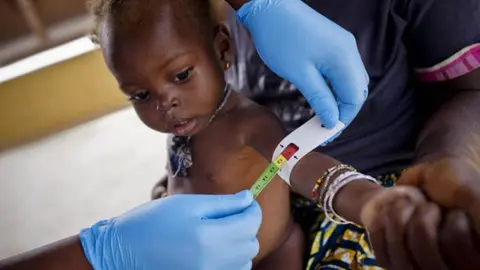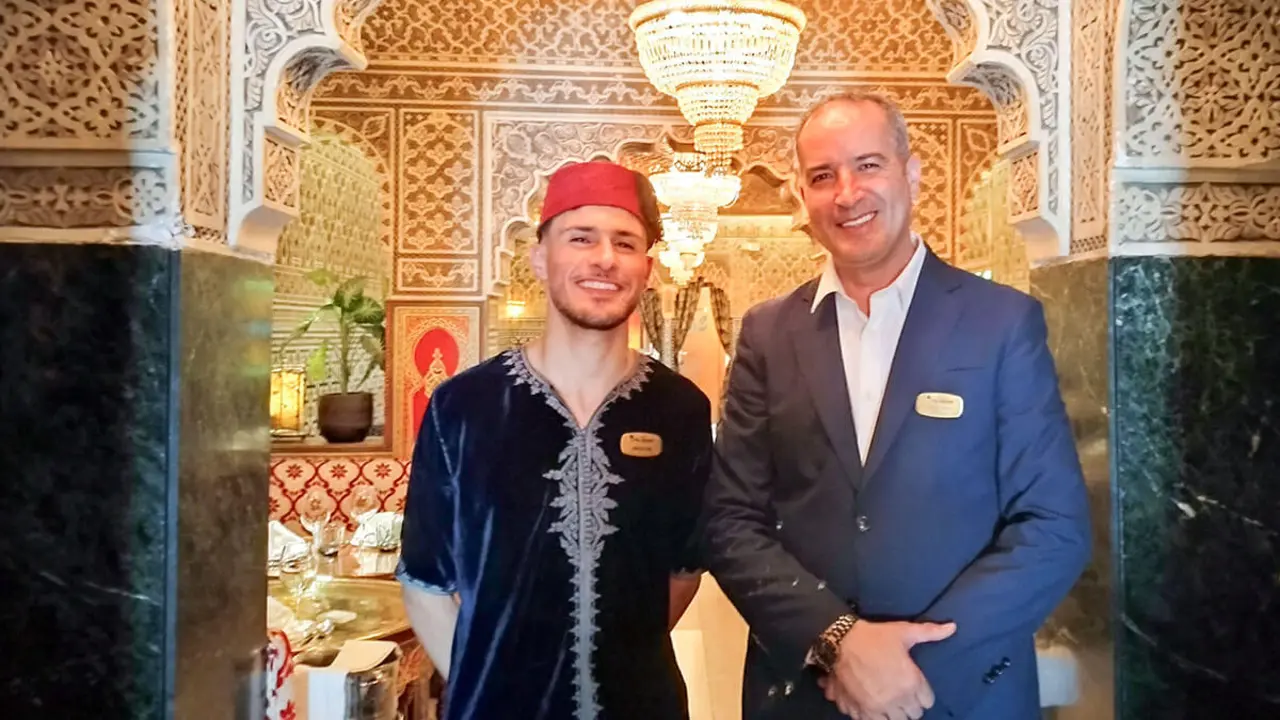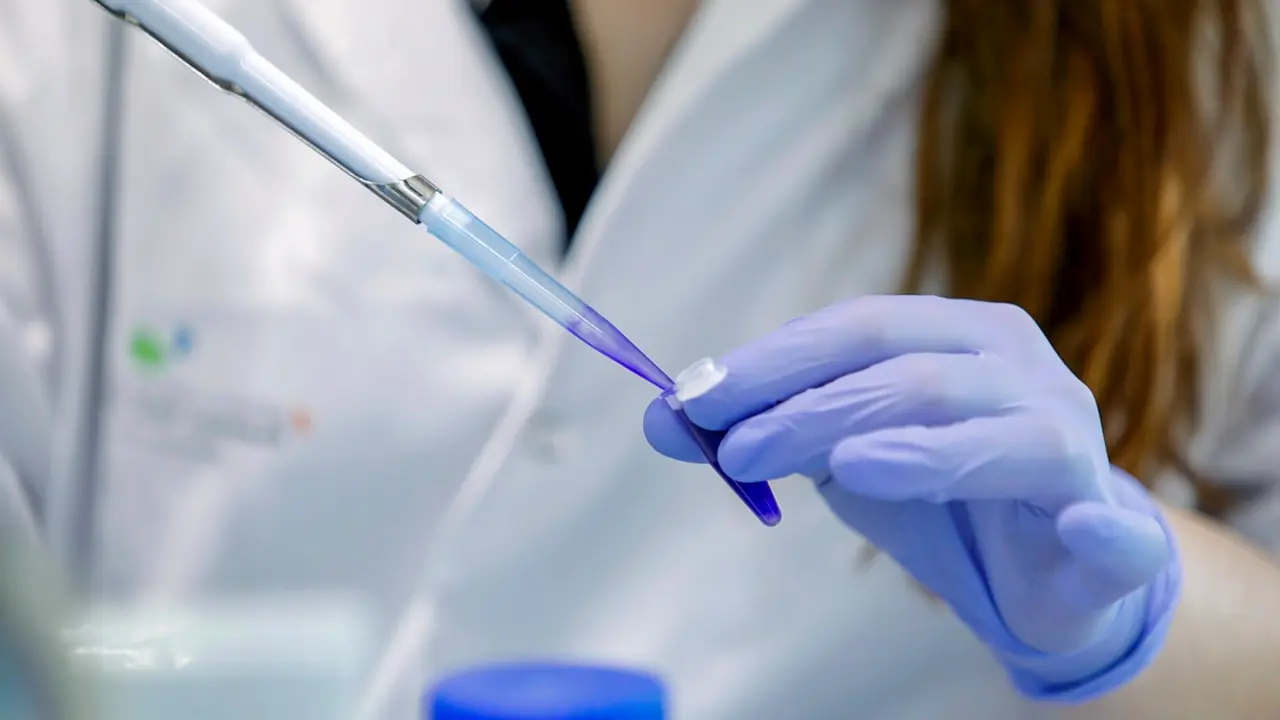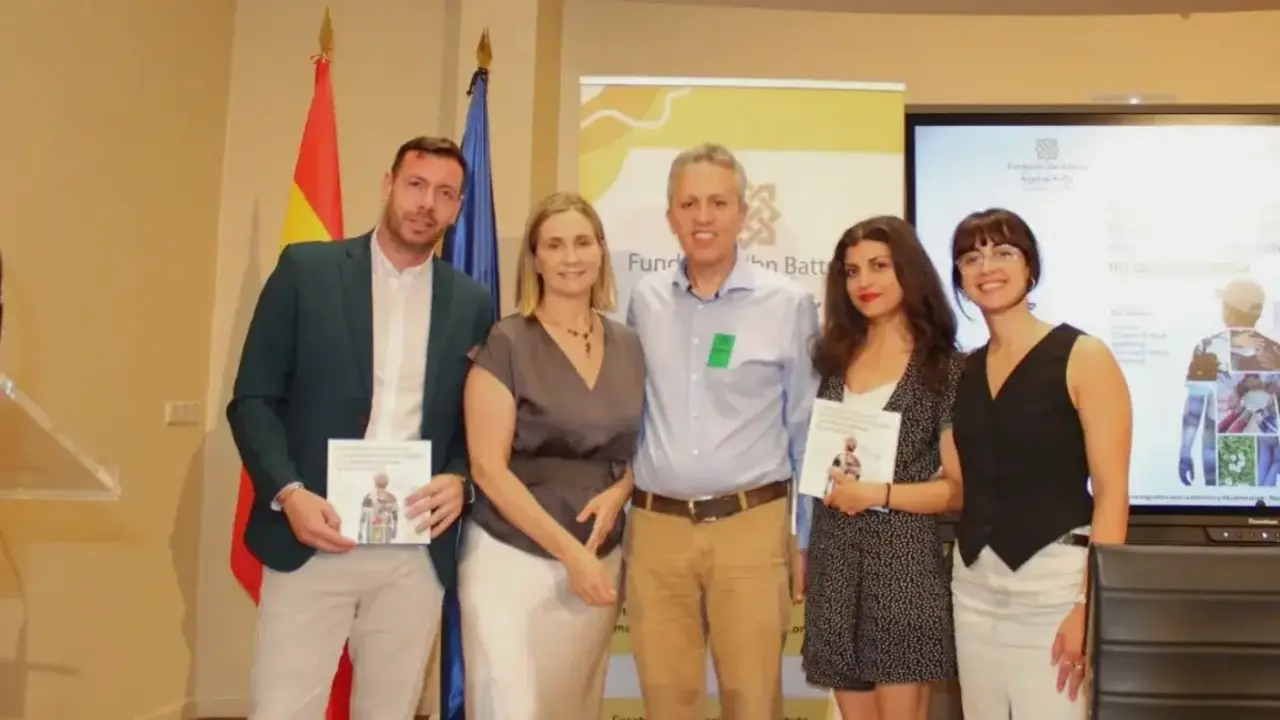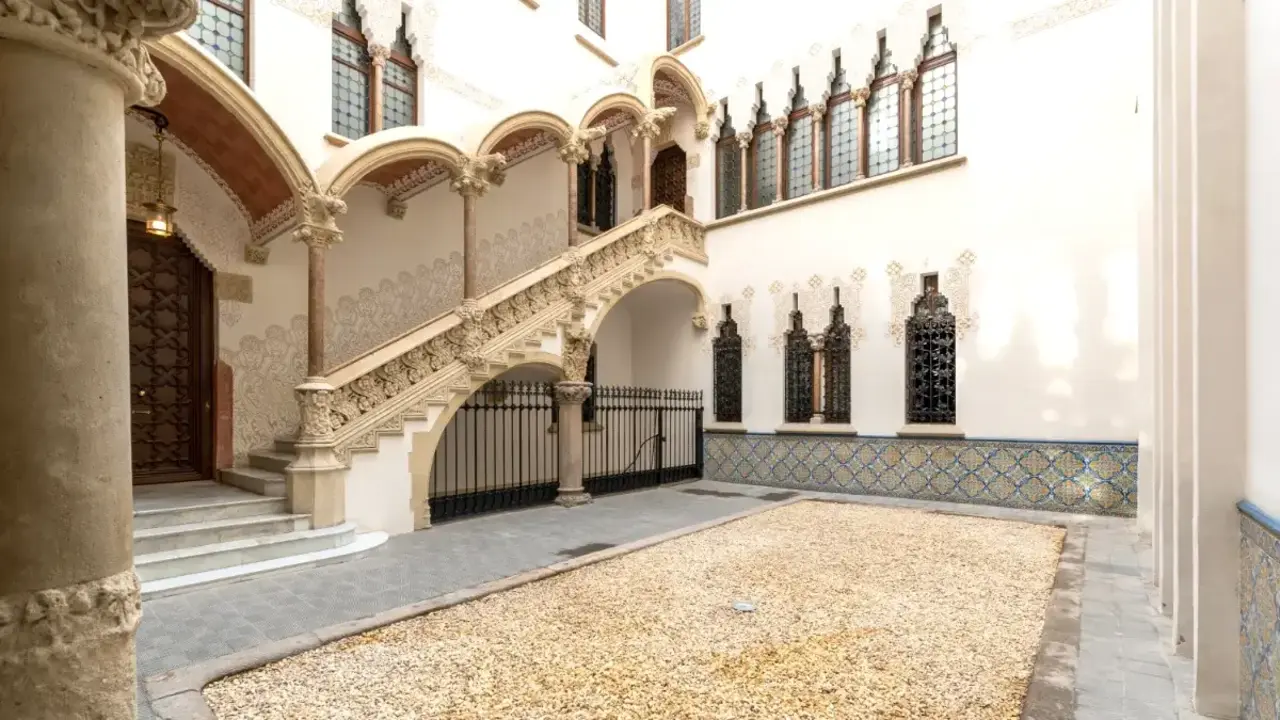Ricky Rubio, the "la Caixa" Foundation and Vall d'Hebron present the Children and Adolescent Rehabilitation Therapeutic Area
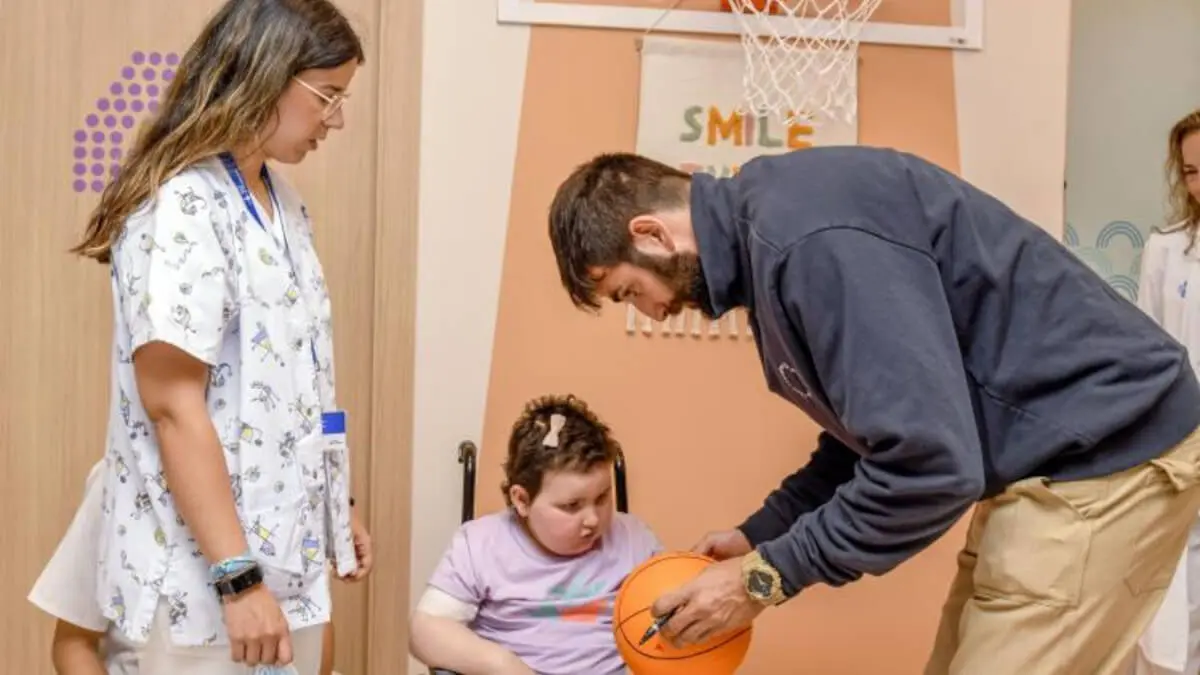
- More space, more patients
- Rehabilitation, a continuum of care
- Basketball, athletics and team work
- More timetables to reconcile with school
The two allies of Vall d'Hebron in this project wanted to know in person the leap in the quality of care for children and adolescents who require rehabilitation, now that the new space has been operational for some time. On this visit, in addition to the manager of the Vall d'Hebron University Hospital, Dr. Albert Salazar, and Dr. Judit Sánchez Raya, head of the Physical Medicine and Rehabilitation Service, they had a special cicerone, Izan Balaña, a young Vall d'Hebron patient that Ricky Rubio met when he was admitted to the Paediatric Oncology ward and with whom he has met again three years later.
"When I visited the Vall d'Hebron Children's Hospital in 2021, both myself and the team of The Ricky Rubio Foundation realised that there was a lack of a specific space for the rehabilitation of children and adolescents, integrated within the same building. Since then, we have been totally dedicated to making this need a reality in the largest and most ambitious project that the foundation has carried out to date", recalled Ricky Rubio, founder of The Ricky Rubio Foundation.
The Deputy Director General of the "la Caixa" Foundation, Marc Simón, stressed the importance of the project. "Our aim is to always be close to the people who need it most, in this case children and adolescents in a situation of illness or in the process of recovery. That is why we are promoting the creation of this new space, which will help to humanise the hospital environment and which we are sure will help to improve the quality of life of paediatric patients", he shared.
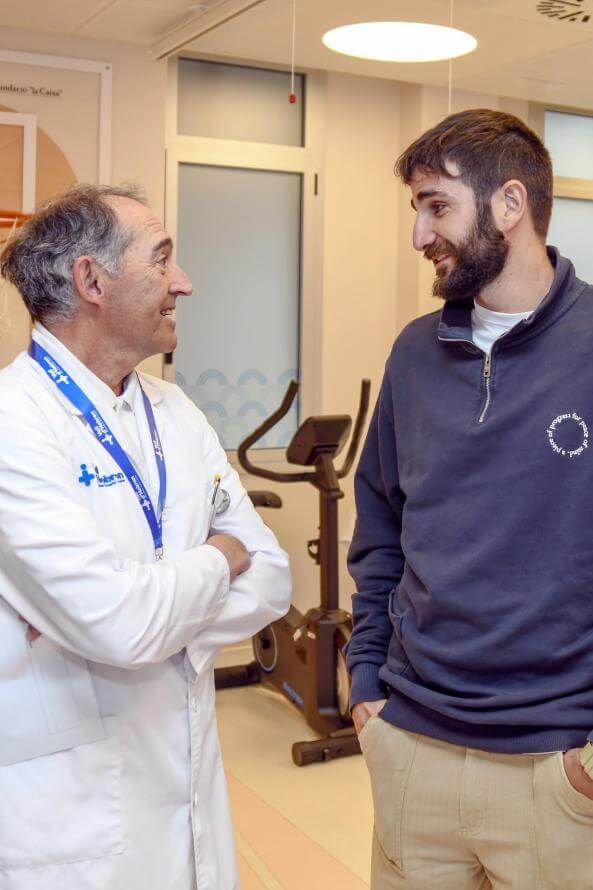
More space, more patients
Before the Children's Hospital opened the therapeutic rehabilitation area, outpatients had to travel to the Traumatology, Rehabilitation and Burns Hospital for rehabilitation. And the bulk of inpatients did therapy in the rooms. But in 2021, the "la Caixa" Foundation and The Ricky Rubio Foundation signed an agreement with the Vall d'Hebron University Hospital that would change everything: they would help build a Therapeutic Area for Child and Adolescent Rehabilitation for the Children's Hospital.
Two years and a few renovations later, on 20 November, the new space opened its doors and placed the Vall d'Hebron Children's Hospital on a par with the world's major paediatric hospitals, also in rehabilitation. The paediatric gym, which uses games and sport as motivating elements, makes it possible to treat 37% more patients per year and to extend the opening hours in the afternoon to facilitate work-life balance. "We have gone from treating 540 patients a year to 750," said Dr Albert Salazar. Together with Hospital La Paz in Madrid, Vall d'Hebron is a reference in Spain in this area. "We have CSUR (Centre, Service and Reference Unit) accreditations in paediatric orthopaedics; paediatric renal, cardiac, pulmonary and hepatic transplants; and neuromuscular and rare diseases," recalled the manager of Vall d'Hebron University Hospital.
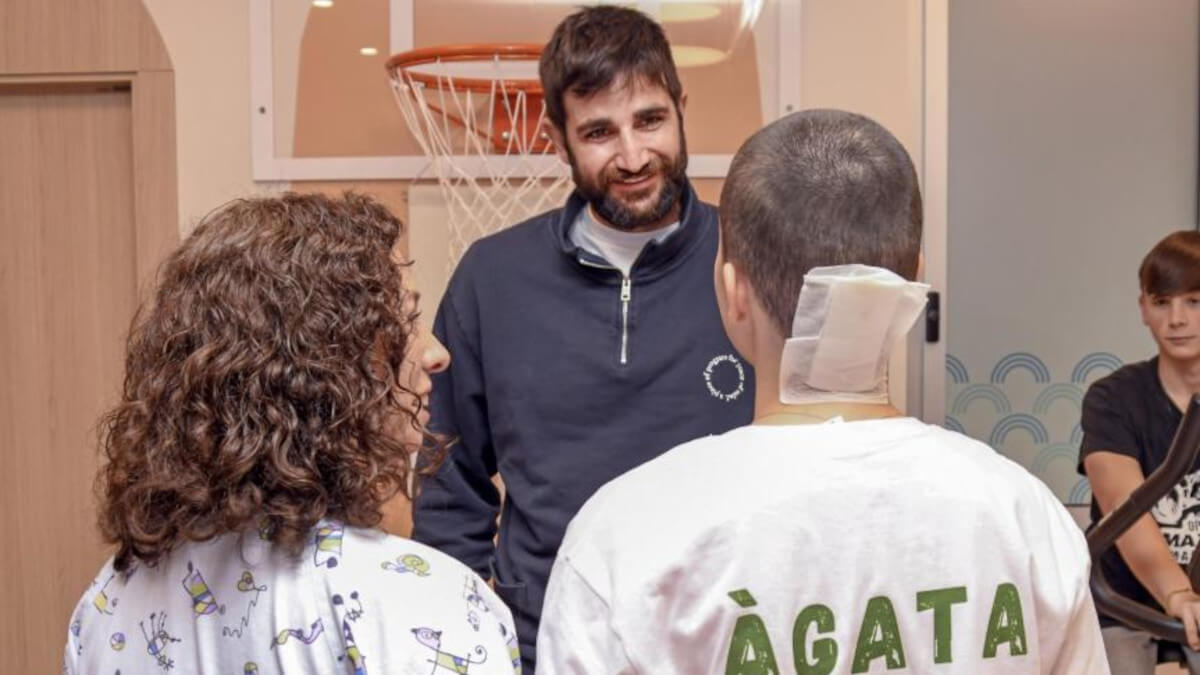
Rehabilitation, a continuum of care
The Deputy Director General of the "la Caixa" Foundation, Marc Simón, and Ricky Rubio were accompanied during the visit by Dr. Albert Salazar, Dr. Judith Sánchez-Raya and Izan, one of the patients who have benefited from the new space. In 2020, when COVID-19 led the West to confine itself, Izan left home and was admitted to the Vall d'Hebron University Hospital to treat a relapse of leukaemia. He was 17 years old. In the spring of 2021, when he was in an isolation room, after having undergone a bone marrow transplant, Ricky Rubio knocked on the glass of the door that connected him to the outside. The isolation chambers have a telephone so that patients who are immunosuppressed can communicate with the outside world and isolation is not synonymous with loneliness. They talked about basketball and projects. Before saying goodbye, Ricky Rubio gave Izan the famous Pau Donés T-shirt with the slogan "Living is urgent". And so he does. One of Izan's projects will cease to be in September, when he starts his double degree in Physical Activity and Sport Sciences (CAFE) and Physiotherapy. "During my recovery, I have been accompanied by a physiotherapist at Vall d'Hebron, Denys Santa Marina, who has been a reference for me and has encouraged me to study physiotherapy. In September I start the double degree and with what I learn, I hope to be able to give back what I have been given," she said.
Izan is part of the group of patients who have used the gym for the first time. He started doing rehabilitation in his room and was discharged as an outpatient in the new space. At Vall d'Hebron, the Physical Medicine and Rehabilitation team accompanies patients from admission, according to their needs. "We do respiratory physiotherapy in the paediatric ICU and continue during the hospitalisation of patients with motor physiotherapy, occupational therapy or speech therapy, and outpatient, once they return home," said Dr. Judit Sánchez Raya.

Basketball, athletics and team work
The gymnasium is on floor zero, in the space dedicated to the civilisations of the Mediterranean. "As the Greeks did, we have turned rehabilitation and exercise into a game, thanks to a more accessible, fun and suitable space for children and adolescents," said Dr Judith Sánchez-Raya, head of Physical Medicine and Rehabilitation. In total, it has 220 square metres distributed between an open-plan multi-purpose room for inpatients and outpatients; two rooms for individual treatments; two occupational therapy rooms and a second multi-purpose room that can be opened and closed, depending on the needs, where respiratory physiotherapy will be carried out.
Its design plays with the idea of focusing recovery on sports training as well as health and to connect the values of sport with the treatment process. In the multi-purpose room there is an athletics track, at the end of which there is a mirror that gives the sensation of being on a circular track. The walls are reminiscent of a climbing wall. To transport patients in need, a blue wave-shaped crane hangs from the ceiling, making children and adolescents imagine they are surfing. There are also elliptical bikes, stairs, weights, hydraulic stretchers and mats, among other elements, adapted to the needs of children and adolescents.
The wastebasket in the old gymnasium for basketball shooting practice has been replaced by a real basket that invites play. The new space has allowed Dr. Judith Sanchez-Raya and her team to turn the service around. They have created group rehabilitation programmes that they could not do before because of the space. They already work for patients with cancer, scoliosis or pectus excavatum. "In addition, we do remote rehabilitation and treatments with virtual reality," said the doctor.
More timetables to reconcile with school
The new therapeutic rehabilitation area has also made it possible to extend opening hours. The gym is now open from 8:00 to 20:00. The extension in the afternoon is designed so that outpatients do not have to skip classes and families have longer opening hours to facilitate reconciliation. And between 15:00 and 17:00 there is a time slot reserved for hospitalised patients. "Getting out of the rooms and leaving the hospital ward behind to go to a different place to recuperate generates positive emotions," said Denys Santa Marina.


